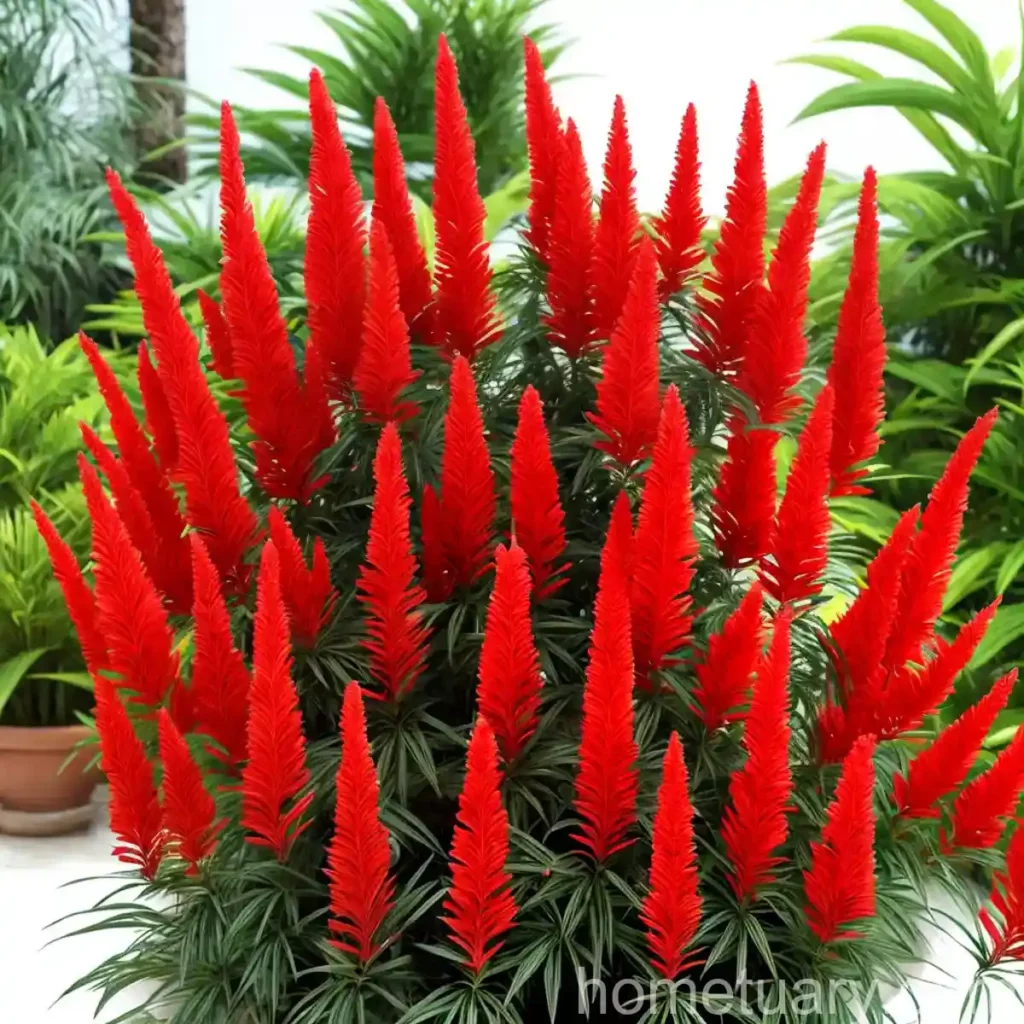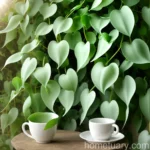The Wonderful World of Standing Cypress (Ipomopsis rubra)
As a plant scientist, I have always been fascinated by the diverse and amazing world of plants. Among the plethora of plant species, standing cypress (Ipomopsis rubra) holds a special place. Its vibrant red flowers and ecological significance make it a fascinating subject for study and cultivation. In this comprehensive guide, we will delve into the intricacies of standing cypress, exploring its culture, uses, maintenance, and much more. Let’s embark on an enlightening journey to uncover the intriguing facets of this remarkable plant.
What is Standing Cypress (Ipomopsis rubra)?
Standing cypress, scientifically known as Ipomopsis rubra, is a striking wildflower that belongs to the phlox family, Polemoniaceae. This native North American perennial is renowned for its towering, vivid red flowers that attract a myriad of pollinators, including hummingbirds and butterflies. The plant’s erect growth habit and stunning floral display make it an eye-catching addition to gardens, natural landscapes, and wildflower meadows.
Key Takeaways – Standing Cypress (Ipomopsis rubra)
Before we delve deeper into the various aspects of standing cypress, let’s highlight some key takeaways about this captivating plant:
- Scientific Name: Ipomopsis rubra
- Common Name: Standing Cypress
- Family: Polemoniaceae
- Flower Color: Vivid Red
- Growth Habit: Erect, Vertical
- Attracts: Hummingbirds, Butterflies
- Native: North America
- Uses: Garden Ornamental, Wildlife Attraction, Ecological Significance
Now that we have a brief introduction to standing cypress, let’s explore the plant in greater detail, covering its culture, uses, maintenance, and various other aspects.
Culture
Water
Standing cypress thrives in well-drained soil and prefers moderate moisture levels. During the initial establishment phase, regular watering is essential to encourage robust root development and healthy growth. Once established, the plant exhibits good drought tolerance and can withstand periods of reduced water availability. However, during prolonged dry spells, providing supplemental water can help maintain the plant’s vigor and flowering performance.
Sunlight
This species thrives in full sun to partial shade. Adequate sunlight is crucial for promoting prolific flowering and ensuring strong, upright growth. In locations with hot summers, providing some shade during the hottest part of the day can prevent potential stress on the plant.
Fertilizer
Standing cypress generally does not require heavy fertilization. A balanced, slow-release fertilizer applied in spring can provide the necessary nutrients for healthy growth and vibrant flowering. It’s important not to over-fertilize, as excessive nitrogen can lead to lush foliage at the expense of flower production.
Soil
Well-drained, loamy soil is ideal for standing cypress. The plant prefers slightly acidic to neutral soil pH and benefits from organic matter incorporated into the soil during planting. Amending the soil with compost can improve its texture and fertility, creating an optimal environment for the plant to thrive.
Pruning
Pruning is generally not necessary for standing cypress, as the plant maintains a neat and upright growth habit. However, removing spent flower stalks can help promote continuous blooming and prevent self-seeding in garden settings. Additionally, trimming back any dead or damaged foliage can enhance the plant’s overall appearance.
Propagation
Standing cypress can be propagated from seeds or through division. Collecting ripe seeds from the plant can enable the cultivation of new specimens. Additionally, division of mature clumps can be performed in early spring to create multiple plantings.
Container Popularity
Standing cypress is well-suited for container cultivation, particularly for those with limited garden space. Its vertical growth habit and dazzling flowers make it an attractive choice for adding height and color to container gardens, patios, and balconies.
Container
When growing standing cypress in containers, it is essential to select a spacious pot with adequate drainage holes. Using a high-quality potting mix that provides good drainage and aeration is crucial for the plant’s health and growth. Regular watering and occasional fertilization can help maintain the plant’s vigor and blooming performance in container settings.
Common Diseases
Disease Diagnosis
Standing cypress is generally resistant to most common plant diseases. However, it can be susceptible to fungal issues such as powdery mildew in conditions of high humidity and poor air circulation. Proper spacing, adequate sunlight, and avoiding overhead watering can help minimize the risk of disease development.
Common Pests
Standing cypress is relatively pest-resistant, with few major insect problems. However, aphids, spider mites, and caterpillars can occasionally affect the plant. Regular monitoring and the use of natural predators or organic insecticidal soaps can effectively manage pest populations without causing harm to beneficial insects and pollinators.
Botanist’s Tips
As a botanist, I have encountered numerous enchanting plant species in my career, and standing cypress stands out for its remarkable attributes. Here are some tips to effectively grow and appreciate this captivating plant:
- Provide Adequate Support: Due to its vertical growth habit, providing support in the form of stakes or trellises can help prevent the plant from flopping over, especially in windy conditions.
- Promote Wildlife Interaction: Embrace standing cypress as a means to attract and support local wildlife, particularly hummingbirds and butterflies, by planting it in wildlife-friendly garden settings.
- Emphasize Vertical Accents: Incorporate standing cypress into garden designs to introduce vertical elements and add a striking visual focal point, especially when combined with complementary plantings.
Fun Facts
To further foster appreciation for standing cypress, here are some intriguing fun facts about this captivating plant:
- Standing cypress is an important nectar source for hummingbirds, showcasing its ecological significance in supporting these remarkable avian pollinators.
- The species name “rubra” is derived from the Latin word for “red,” reflecting the extraordinary coloration of its flowers.
- This native wildflower is renowned for its ability to thrive in harsh, rocky environments, underscoring its resilience and adaptability in natural habitats.
Links to External Resources
For further exploration of standing cypress and related topics, the following external resources provide valuable information and insights:
- Native Plant Database – Ipomopsis rubra
- Pollinator Partnership – Gardening for Pollinators
- USDA Plant Profile – Ipomopsis rubra
- The Hummingbird Society
Plant Name: “standing cypress (Ipomopsis rubra)”
Now that we have delved into the captivating world of standing cypress, I hope this comprehensive guide has shed light on the various aspects of this exceptional plant. From its cultural requirements and uses to intriguing fun facts and botanist’s tips, standing cypress stands as a testament to nature’s beauty and resilience. Whether gracing wild landscapes or enhancing garden settings, the sight of its vibrant red flowers and the ecosystems it supports exemplify the enduring allure of native plant species.
In closing, I encourage all plant enthusiasts to embrace the enchanting world of standing cypress and explore the vast array of native plants that contribute to the rich tapestry of our natural environment. With its ecological importance, ornamental appeal, and fascinating characteristics, standing cypress serves as an emblem of the profound connections between plants, wildlife, and the environments they inhabit.
References:
-
- Lady Bird Johnson Wildflower Center. “Native Plant Database – Ipomopsis rubra.” Wildflower.org. Link
-
- Pollinator Partnership. “Gardening for Pollinators.” Pollinator.org. Link
-
- United States Department of Agriculture. “USDA Plant Profile – Ipomopsis rubra.” Plants.usda.gov. Link
-
- The Hummingbird Society. “Home Page.” Hummingbirdsociety.org. Link















